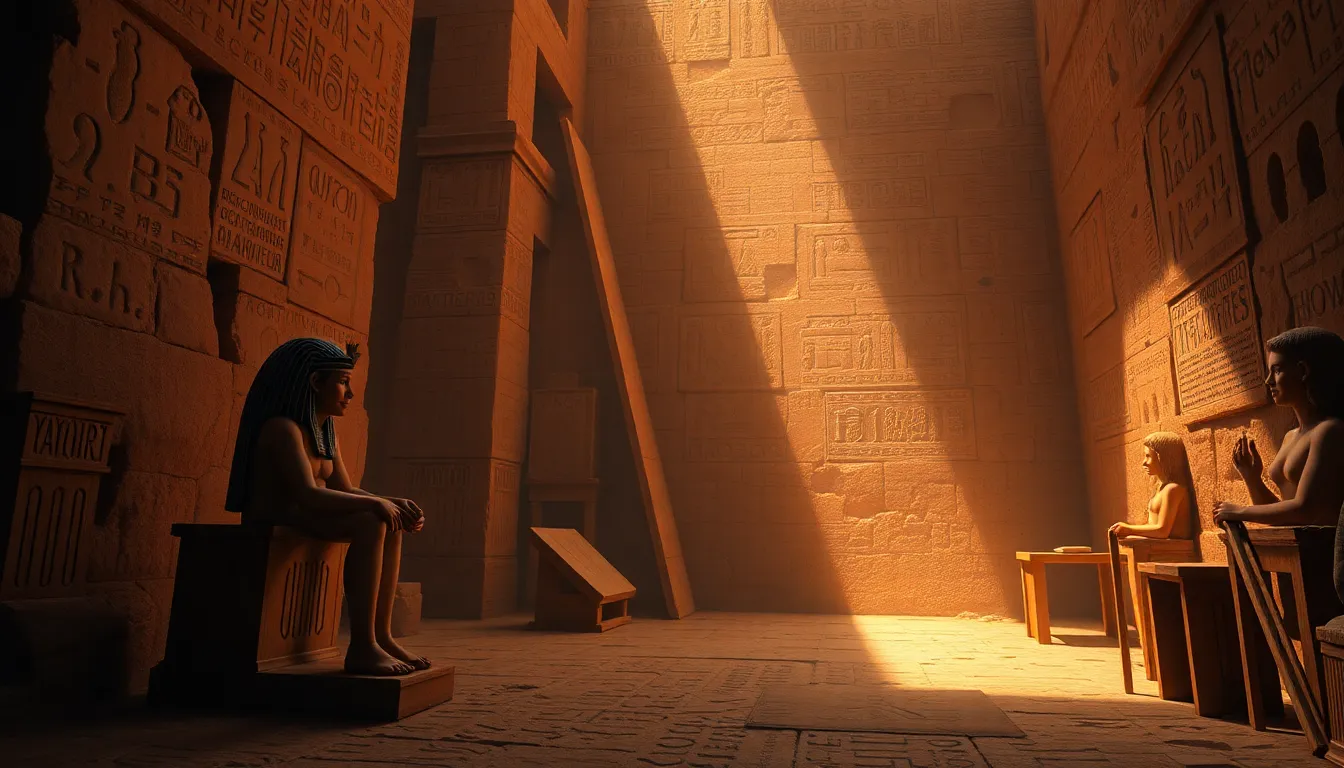The Influence of Tomb Texts on Modern Egyptology
I. Introduction
Tomb texts are inscriptions found in ancient Egyptian burial sites, composed of spells, prayers, and descriptions intended to guide the deceased through the afterlife. These texts hold immense significance in ancient Egyptian culture, serving as both a spiritual guide and a reflection of societal beliefs. This article examines the profound impact that tomb texts have had on modern Egyptology, shedding light on their historical context, methodologies, key discoveries, and the thematic insights they provide into ancient Egyptian civilization.
II. Historical Context of Tomb Texts
The origins of tomb texts can be traced back to the early dynastic periods of ancient Egypt, evolving through various forms and purposes over centuries. They emerged initially as simple inscriptions and developed into complex literary compositions.
- Pyramid Texts: The earliest religious texts, found in the pyramids of the Old Kingdom (c. 2686–2181 BCE), intended for the pharaoh’s protection and resurrection.
- Coffin Texts: These texts appeared during the Middle Kingdom (c. 2055–1650 BCE) and were inscribed on coffins, making the knowledge of the afterlife accessible to nobility and commoners.
- Book of the Dead: A compilation of spells and guidelines for the afterlife, it became popular in the New Kingdom (c. 1550–1070 BCE) and was often customized for the deceased.
These texts were integral to burial practices, believed to facilitate the deceased’s journey to the afterlife, ensuring their immortality and divine favor.
III. Methodologies in Egyptology
The study of tomb texts involves various methodologies that combine traditional and modern approaches. Egyptologists employ several techniques to analyze these texts and their significance.
- Traditional Approaches: Early Egyptologists relied on the deciphering of hieroglyphs and the understanding of ancient Egyptian language and culture.
- Linguistic Analysis: Modern scholars use linguistic methods to translate texts accurately, considering syntax, semantics, and the cultural context of the language.
- Archaeological Methods: Excavations and contextual studies of burial sites provide a physical framework that enhances the understanding of texts.
IV. Key Discoveries and Contributions
Several key discoveries of tombs have significantly influenced the field of Egyptology, providing new insights into ancient Egyptian beliefs and practices.
- Tutankhamun’s Tomb: Discovered in 1922 by Howard Carter, this tomb contained numerous artifacts and texts that illuminated the religious practices and funerary customs of the New Kingdom.
- Significant Findings: Texts such as the “Weighing of the Heart” scene from the Book of the Dead have reshaped our understanding of ancient Egyptian concepts of morality and the afterlife.
- Contributions of Egyptologists: Pioneers like James Breasted and E.A. Wallis Budge have played crucial roles in deciphering these texts, making them accessible to the academic community.
V. Thematic Insights from Tomb Texts
Tomb texts offer profound insights into the beliefs and practices of ancient Egyptians, reflecting their views on life, death, and the afterlife.
- Beliefs about the Afterlife: Many texts emphasize the importance of the afterlife, with spells designed to protect and guide the deceased through trials.
- Social and Political Structures: The texts often reveal the hierarchies and roles within society, indicating how individuals viewed their status and duties.
- Cultural and Religious Practices: Inscriptions detail rituals, offerings, and the relationship between humans and the divine, showcasing the deep spirituality of the ancient Egyptians.
VI. Tomb Texts and Interdisciplinary Research
The study of tomb texts is not confined to Egyptology alone; it intersects with various disciplines, enriching our understanding of ancient cultures.
- Interplay with Anthropology: The examination of cultural practices and social structures through tomb texts draws from anthropological perspectives.
- Art History Contributions: Analyzing the artistic representations accompanying tomb texts provides context and enhances comprehension of the cultural significance.
- Collaborative Studies: Linguistics and theology often collaborate with Egyptology to interpret religious texts and their implications for ancient beliefs.
VII. Challenges and Controversies in Interpretation
Despite advances in the field, the interpretation of tomb texts remains fraught with challenges and controversies.
- Translation Issues: Ancient languages pose difficulties in translation, with nuances and meanings often lost or misinterpreted.
- Debates over Authenticity: Some texts have sparked debates regarding their context and authenticity, questioning the historical reliability of certain inscriptions.
- Ethical Considerations: The display and interpretation of tomb artifacts raise ethical questions about cultural heritage and respect for the deceased.
VIII. Conclusion
Tomb texts have had an enduring impact on modern Egyptology, shaping our understanding of ancient Egyptian civilization. They provide invaluable insights into the beliefs, practices, and societal structures of a culture that continues to fascinate scholars and enthusiasts alike. As research progresses, future studies are likely to uncover even more about the complexities of ancient Egyptian life and death. The relevance of tomb texts in contemporary scholarship underscores their importance in unraveling the mysteries of ancient civilizations, contributing to a deeper understanding of human history.




